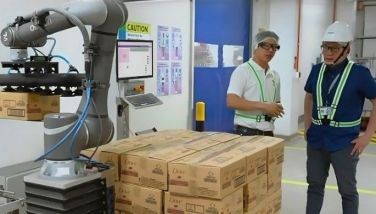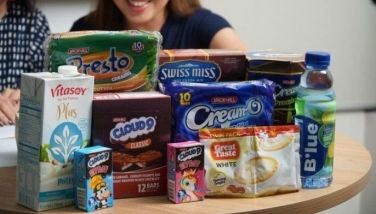McCann-Erickson’s youth survey: The interactive generation
July 2, 2001 | 12:00am
 Interactive gen. Yes, welcome the new generation.
Interactive gen. Yes, welcome the new generation.
In the latest survey on the youth by McCann-Erickson, results show that today’s generation are more social and connectivity-driven than ever before. It does not matter if they are in the A,B, C or even D segment of society. The statement is: "You are not in if you are not connected". In effect, to be accepted means you have to be wired.
Emily Abrera, chairman of McCann-Erickson Phils., notes that the concept of building relationships among their peers commonly called the barkada is still there. "The barkada hasn’t gone away. It has just taken a different form. They don"t go out as much as the youth before; they are just cocooning, spending less money but the barkada is still there."
Based on the survey results which were released last month, access to the virtual/digital world is easier with the proliferation of internet cafes and cyber cafes. These places have virtually become hang-out places for the youth. This is in contrast to the 1970s and 1980s, where the hang-out places of the youth were the discos and other party places.
However, those in the upper brackets or AB classes seem to have an edge in terms of accessibility to the internet as 62% have computers and are hooked up to the internet. Only 13% of the C and D classes enjoy the same privilege.
Nonetheless, the drive to enter the virtual world through computer and play station games – the success of Lara Croft’s "Tomb Raider" attests to this – and get connected through the internet is there and has opened a whole new world to the youth. It has also resulted in the way they perceive things and the world around them.
According to Nandy Villar, McCann-Erickson Phils. vice-president, "There may be several factors that contribute to that (less hours for studying). One is there are more things to do now: more malls, internet cafes, chat rooms, texting. However, based on several articles and studies, all these interactive media seem to increase IQ levels because the patterns used such as spatial relationships and interactive dynamics, which somehow trains the mind, are similar to IQ tests. Kids now can pick up things even if they happen simultaneously."
In effect, the more informal ways of learning have increased vis-a-vis the traditional ways, Abrera said. She notes that there has been some changes in the teaching of some schools to adopt to this trend but, unfortunately, not fast enough and not to the degree that it should.
Abrera also thinks the youth has come full circle in terms of being responsible in their relationships and in what they want to do with their lives.
According to the survey, the youth enjoy going to school but not so much for the teacher’s lectures but mostly for social interaction. Sschool life is considered a "psychological equalizer."
The survey also said, "For the lower classes, their school life is a significant source of emotional well-being. Despite the fact that they are not happy with their standard of living, family life, health and physical surroundings, school provides them an avenue to interact with friends and classmates. School also represents their hope for a brighter future through education." The survey also revealed that money is an important item for the youth. When asked what they would want to change in the family, the common answer is money and how to get more money.
Nonetheless, even with the economic pinch, the youth know how to still have a good time. Instead of going to the movies, they borrow VCDs or play computer games at home. Interestingly, it has indirectly resulted in a "bonding" among the family members. The survey also showed that many parents are now spending more time with their children. Moreover, parents now realize they have to be more of a friend rather than an authority figure to their children.
However, the increased access to new technology, media and changes in the social environment have also resulted in an emergence of new value system for the youth. According to the study, "There is a widening of the gray area between perceived right and wrong – a phenomenon that is probably reinforced by the various circumstances that the youth have to contend with in their everyday lives." The survey shows that the youth feel that society is now more tolerant and forgiving. Because of economic realities, the youth think more of their future rather than totally committing to another person or to family.
Among the regions, the youth in Metro Manila are more rigid in their view of right and wrong than those in Mindanao. Furthermore, the study says that Mindanao deserves more attention from a political perspective. The Mindanao youth are more outspoken and politicized. They openly show their distrust for democracy as a form of government.
While the results of the youth survey are amazing in that they seemingly are contradictions, it has helped McCann-Erickson understand the youth not only as a consumer but as individuals. Thus, commercials such as Francis Magalona’s Royal Tru-Orange, "Ito and gusto ko!" or the more recent "Magpaka-totoo ka" for Sprite truly linger on and typifies today’s youth.
BrandSpace Articles
<
>
- Latest
Latest
Latest
February 21, 2025 - 9:00am
February 21, 2025 - 9:00am
February 13, 2025 - 12:00am
February 13, 2025 - 12:00am
January 30, 2025 - 4:05pm
January 30, 2025 - 4:05pm
January 27, 2025 - 11:00am
By Jay Ann Bonghanoy | January 27, 2025 - 11:00am
January 24, 2025 - 8:00am
January 24, 2025 - 8:00am
Recommended





























